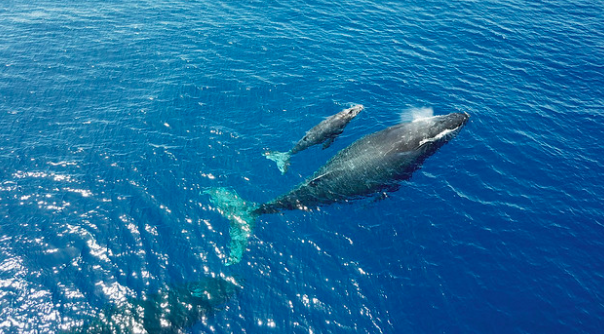Conservation efforts are saving biodiversity.
The Panda is an example of a species that was once endangered but is now vulnerable. Photo by Ju Santana C.C. 2.0.
It’s no secret that in order for our planet to survive, we need an array of species to fulfill different niches. However, when humans over hunt animals, destroy their natural habitats, or disrupt their environment, species can die out, or become extinct. This threatens the status quo of our planet, and the safety of all living organisms.
The International Union for Conservation of Nature (IUCN) created the “Red List” in 1964 to keep track of species that are threatened by extinction. Conservation organizations like the World Wildlife Fund use this list to determine their course of action.
There are three categories to measure species that are threatened by extinction, from lowest risk to highest risk: Vulnerable, Endangered, and Critically Endangered. Because of the efforts of conservation organizations, as well as government acts (such as the 1973 Endangered Species Act), animals have had their endangered status lessened. Here are five animals that you might recognize.
Photo by David Ellis C.C. 2.0.
The Giant Panda: Endangered to Vulnerable
1. The Giant Panda, native to the bamboo forests of China, was once endangered. They are threatened due to loss of their habitat. Forest destruction to make way for roads in China means that Pandas lose access to bamboo, their main source of nutrients. Additionally, they are threatened by hunters who kill them for their fur. However, now there are more than 50 panda reservations in China, and the population has rebounded.
Photo by La Chiquita. C.C. 2.0.
Manatees: Endangered to Vulnerable
2. Manatees were also marked as vulnerable or threatened instead of endangered. Manatees feed on seagrass, which is found in shallow waters. This leaves them vulnerable to boats and jet skies. Conservations have been created to help protect Manatees from trash and boats. However, not everyone was enthused about the reclassification, as advocates think it could undermine the urgency to continue protection efforts for manatees.
Photo by National Marine Sanctuaries.
Humpback Whales: Delisted
3. Some populations of Humpback Whales were delisted from the US government’s endangered species list. In 2016, 9 out of the 14 populations of Humpback whales were delisted. Most whales are threatened by collisions with ships and entanglements in fishing gear. The entire species wasn’t delisted, as Humpback Whales are geographically separated and face different risks. The Marine Mammal Protection Act, and an international ban on whaling serve to continue protecting the species.
Photo by J. Phillip Krone. C.C. 2.0.
American Alligator: Delisted
4. The American Alligator is found in Southeastern United States. The species was put on the endangered list in the 1960s because of hunters and habitat loss. However, after the Endangered Species Act prohibited hunting, the species was able to recover. In 1987, it was removed from the endangered list.
Photo by Clive. C.C. 2.0.
The White Rhino: Delisted
5. The White Rhino is found in South Africa. The species was on the brink of extinction after poachers killed them to take their horns. Due to regulation of poaching and an effort to stop illegal trade, the species has since been removed from the endangered list.
Even though these species have had their categories lessened, or have been removed from the list entirely, conservation efforts are needed to preserve the species and foster the regrowth of their population. Consider volunteering with organizations like the World Wildlife Fund to get involved.
ELIANA DOFT loves to write, travel, and volunteer. She is especially excited by opportunities to combine these three passions through writing about social action travel experiences. She is an avid reader, a licensed scuba diver, and a self-proclaimed cold brew connoisseur.







